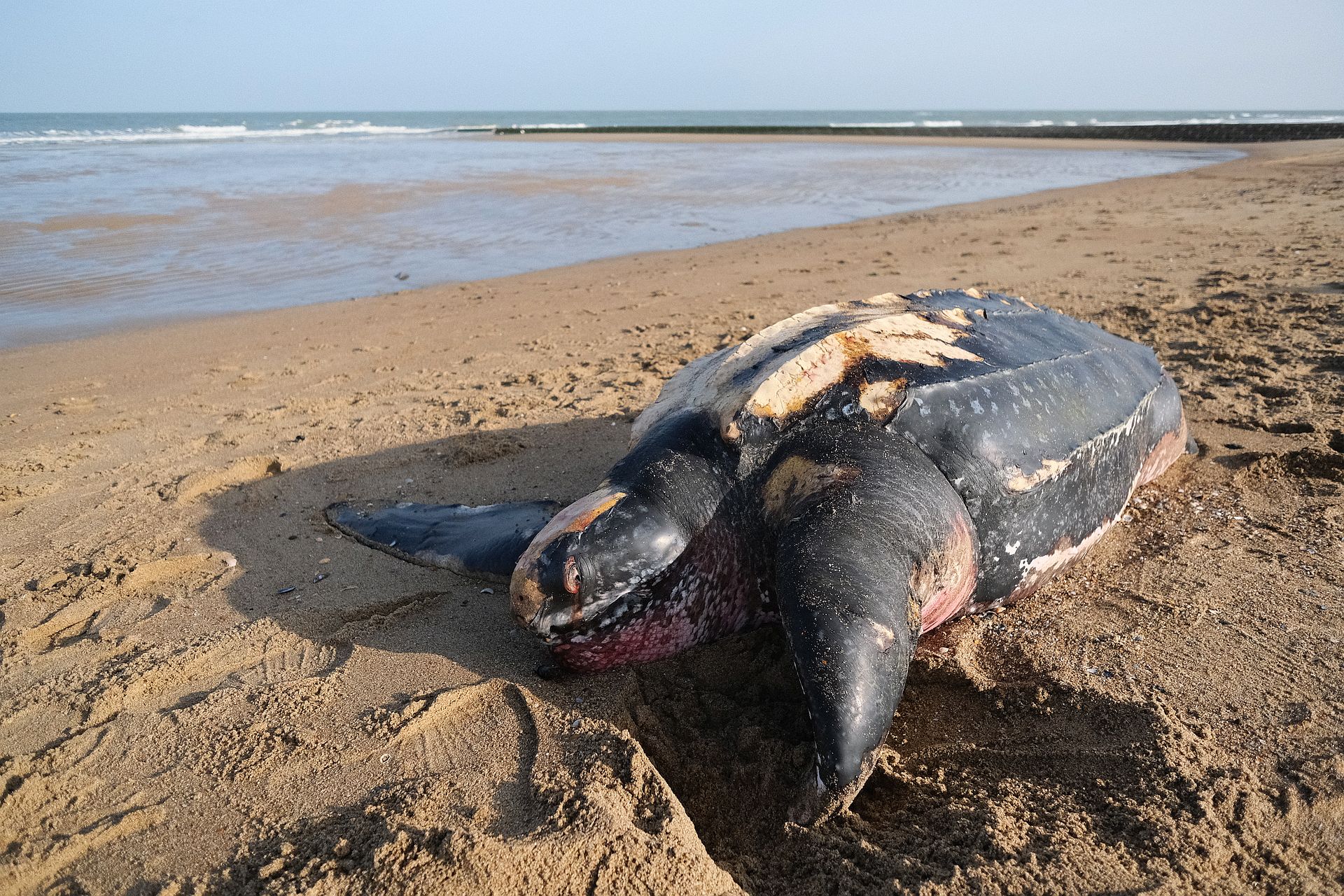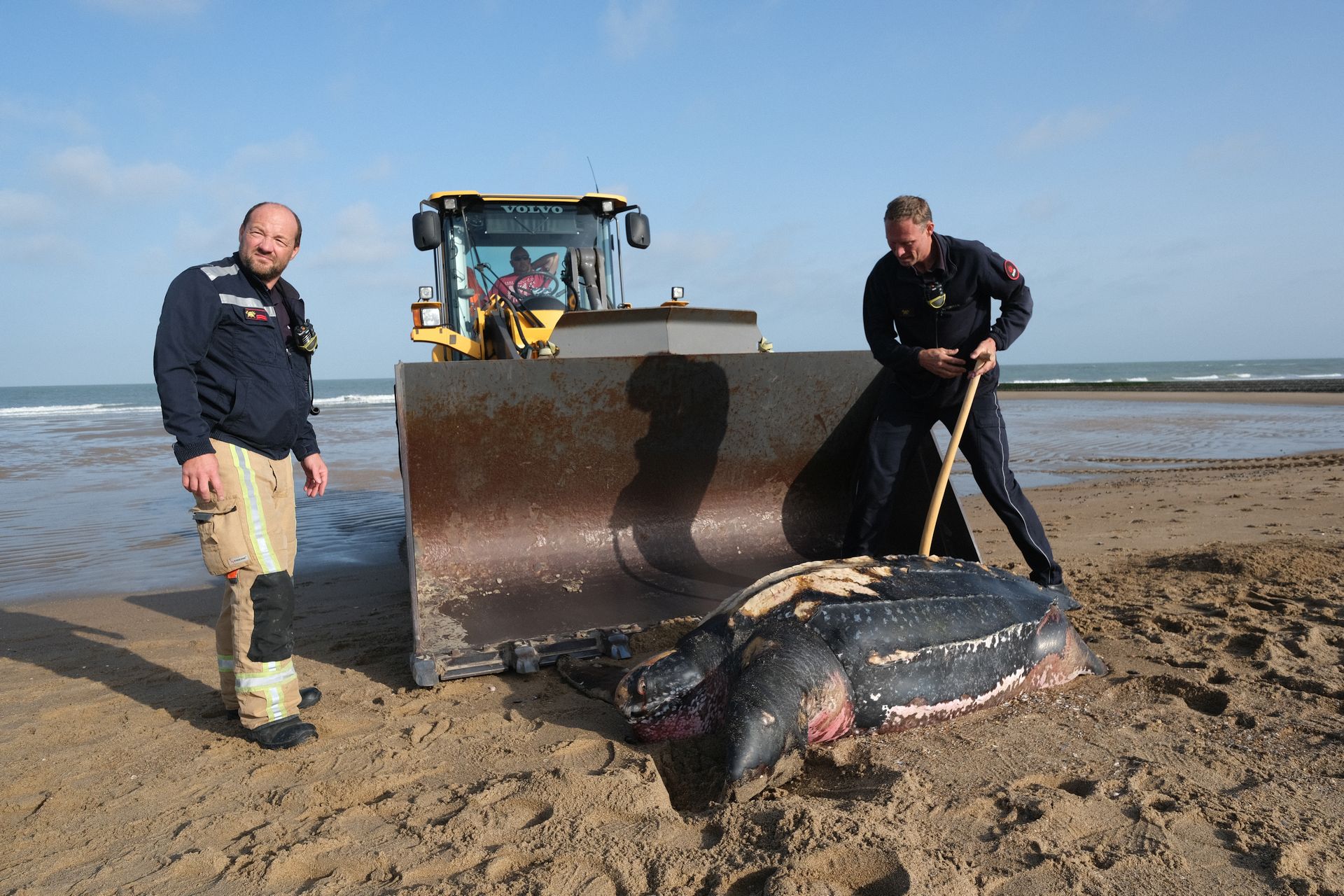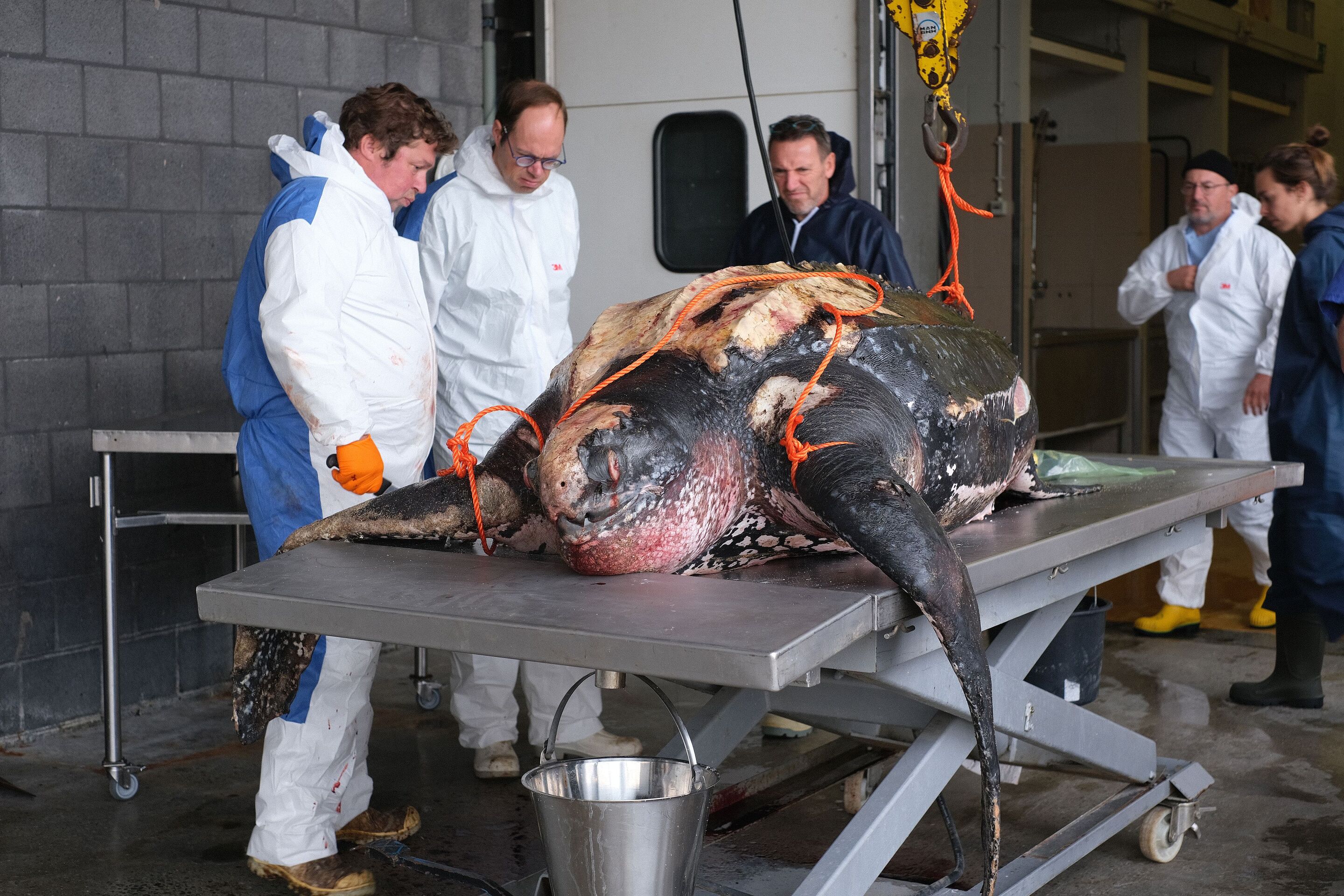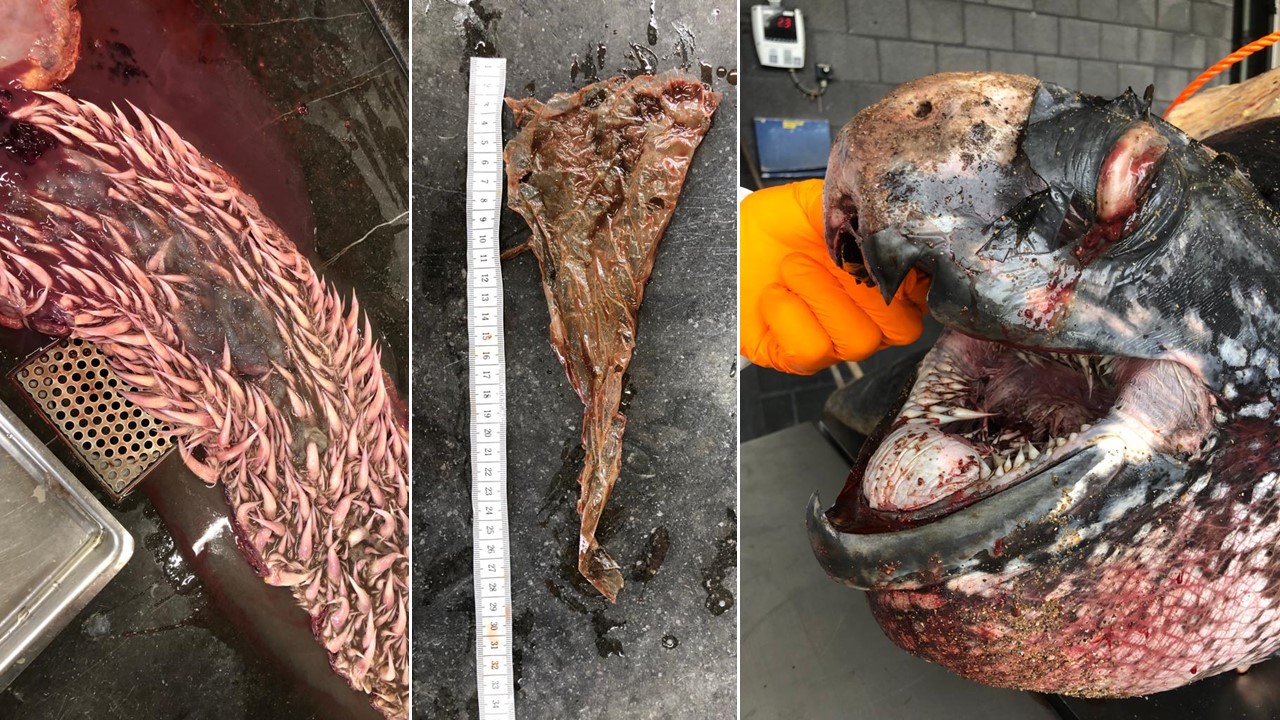Knokke Leatherback Turtle died as a result of acute trauma

Until a dead Leatherback Turtle was found on the beach in Knokke on 7 October 2023, we knew of only three strandings of this species in our country. The autopsy, which took place on 9 October, shows that the unfortunate animal was in healthy condition when an acute but unknown trauma caused a sudden death.
Kelle Moreau
On Saturday morning 7 October 2023, walkers found nothing less than a washed-up dead Leatherback Turtle (Dermochelys coriacea) on the beach in front of the Zwin Nature Park in Knokke, near the Dutch border. An exclusively marine species that only comes ashore to lay eggs, the Leatherback Turtle is also the largest turtle species in the world (with a maximum length of 2.5 m). The unfortunate animal from Knokke measured as much as 1.73 m and was already in a state of decomposition. Death may have occurred a few days before it was washed ashore.
The Royal Belgian Institute of Natural Sciences (RBINS), which is responsible for organising the research on protected marine species, collected the animal from the Knokke fire brigade after it was removed from the beach in collaboration with the municipality's technical service.

In the North Sea?
The Leatherback Turtle is a so-called cosmopolitan, meaning the species is found worldwide. It is best known as a species of warm seas, but it is only for egg-laying that beaches along tropical and subtropical seas are important. Outside the laying season, Leatherback Turtles are also found much further north (as far north as Alaska and Norway) and south (as far south as South Africa and New Zealand). In the shallow North Sea, they are very sporadic, but they can feed there during periods with very abundant jellyfish.
Jellyfish are therefore a possible explanation for the appearance of this Leatherback Turtle in the southern North Sea. In the past few weeks, Barrell Jellyfish (Rhizostoma pulmo) in particular have been abundant in our waters, a jellyfish species that is on the menu of the Leatherback Turtle and which peaks in our waters from August to October. It is not inconceivable that the Leatherback Turtle of Knokke followed this food source into the North Sea.
Four strandings in Belgium
In our regions, the Leatherback Turtle is a great rarity. Jan Haelters (RBINS), coordinator of the stranding network and marine mammal expert, gives an overview: "Only three previous strandings of the Leatherback Turtle are known in Belgium. Earlier strandings date from 1988, 1998 and 2000. Furthermore, only a few sightings of live Leatherback Turtles in Belgian waters are known: one in 2018, two in 2019 and one in 2020. The latter was found between Ostend and Middelkerke in the nets of shrimp fishermen, and was able to be returned to the sea alive."
It seems that the number of cases in our waters is increasing, but with such a small number, it is dangerous to draw such a conclusion. After all, the number of potential observers and the flow of data have also greatly increased thanks to the high digital connectivity in our current world. Nor can a link to global warming be made with such a low number of observations.

Autopsy
The autopsy of the Leatherback Turtle took place on Monday morning 9 October at the Faculty of Veterinary Medicine of Ghent University, in a collaboration between the universities of Ghent and Liège. This revealed that it was a 247 kg female. The remains of Barrell Jellyfish in the oesophagus showed that the animal was eating when it died. A small piece of plastic was found in the gut, but the amount was too small to cause problems. It is well known that animals that eat jellyfish sometimes mistake plastic floating in the water for jellyfish.
Everything seems to indicate that the Leatherback Turtle was healthy when she died suddenly. Although the animal showed no external signs of acute trauma, internally numerous hemorrhages were observed. This indicates a sudden death due to a traumatic event, but it remains unclear what the exact cause of this trauma was.
